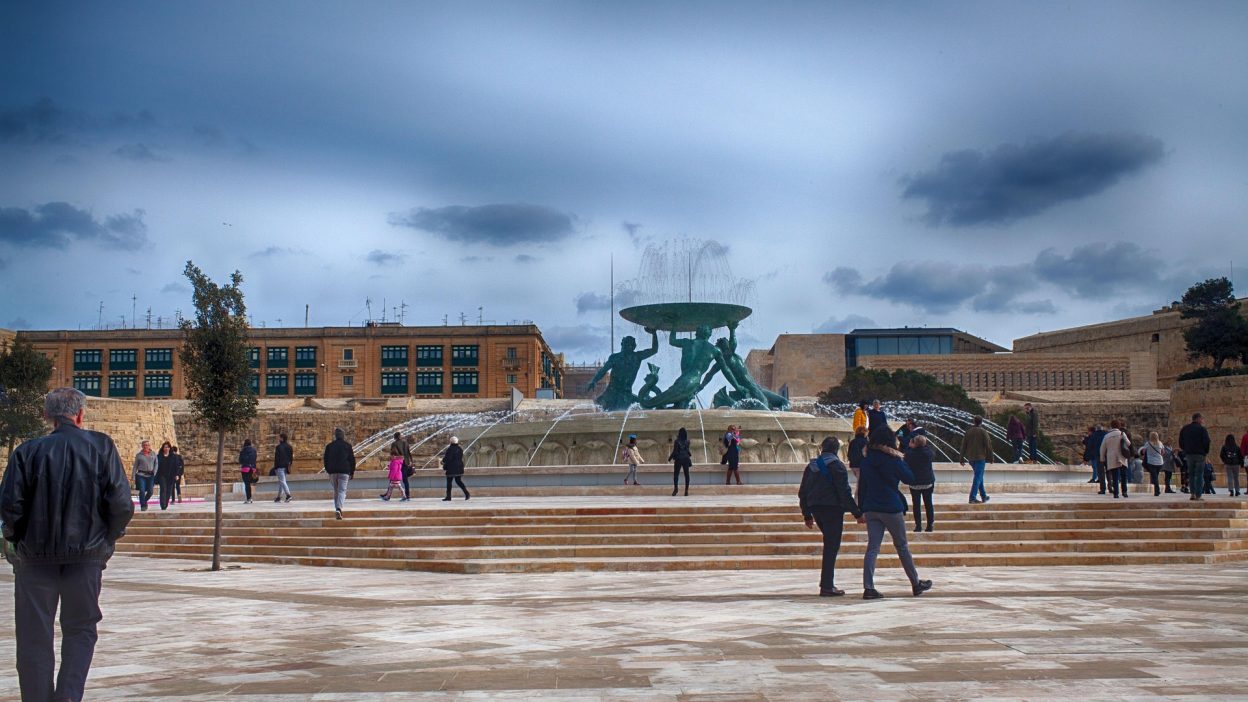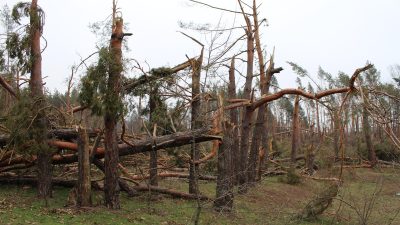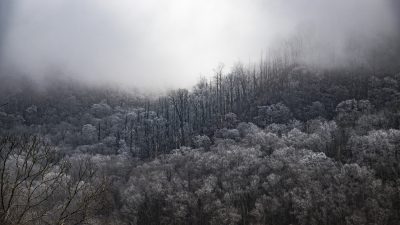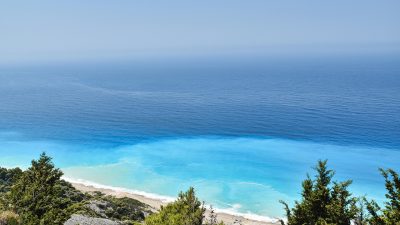Malta’s Forgotten Fury That Shattered History
1. The Unseen Catastrophe: How the Valletta Tornado of 1551–1556 Changed Malta Forever
Malta, a small yet strategically significant island in the Mediterranean, has witnessed some of the most violent events in history, from bloody battles to devastating sieges. However, one of its most forgotten yet catastrophic disasters was the Valletta Tornado of 1551–1556. Unlike anything the island had ever seen, this violent storm left entire districts in ruins, wiped out trading fleets, and took the lives of hundreds, if not more.
What makes this tornado particularly mysterious is the lack of detailed historical documentation. Unlike the famous sieges of Malta, which were meticulously recorded, this disaster seems to have been either overlooked or deliberately erased from history. Yet, those who survived spoke of a monstrous, spiralling vortex that tore through Valletta, reducing it to a landscape of wreckage and despair.
Malta, which was not known for tornado activity, was caught completely off guard. Some historians argue that the Valletta Tornado was a series of tornadoes over five years, while others believe that a single storm caused long-lasting damage. Either way, this was one of the most devastating disasters in Malta’s history, leaving a lasting mark on its people, infrastructure, and economy.
2. A Storm Without End: Was It One Tornado or Several Over Five Years?
One of the greatest mysteries surrounding the Valletta Tornado is whether it was a single violent event or a series of tornadoes spanning several years. Most records from the time suggest that Valletta and its surroundings suffered from severe weather events between 1551 and 1556, leading some historians to believe that the destruction was caused by multiple storms rather than one catastrophic tornado.
Eyewitnesses from the 16th century described an unprecedented force of nature that ripped through Malta’s capital. Some accounts detail a twisting black column of wind, sweeping away anything in its path, while others claim that severe winds and torrential rain lasted for days, flooding Valletta’s streets and crippling its economy.
Regardless of whether it was one tornado or several, the consequences were devastating. Entire buildings crumbled under the force of the wind, ships vanished beneath the raging sea, and hundreds of people perished. The sheer scale of destruction suggests that this was no ordinary storm—it was an anomaly that defied Malta’s climate history.
3. Unmasking the True Cost: How Many Lives Were Lost in the Valletta Tornado?
Unknown Death Toll: A Forgotten Tragedy
- The exact number of casualties remains uncertain, as proper record-keeping was not common in the 1500s. However, hundreds of people are believed to have died, either from collapsing structures, being thrown into the sea, or suffering severe injuries with no access to medical aid.
Survivors’ Nightmare: The Pain Didn’t End with the Storm
- Many who survived the storm faced a slow and painful death due to infections, untreated wounds, and starvation. With roads blocked by debris and medical knowledge extremely limited, survival was often a matter of sheer luck.
Infrastructure in Ruins: A City Torn Apart
- Valletta’s harbour was left in ruins, with ships either destroyed or missing. Some key buildings collapsed, including parts of fortifications and religious structures. The storm did not discriminate—both military and civilian buildings were flattened, leaving Malta in a state of chaos.
The Missing: Bodies Never Found
- Some victims were never recovered. The sea swallowed entire merchant ships, taking their passengers with them. Others were buried beneath rubble, their remains never discovered, adding to the mystery and horror of the event.
4. Was It God’s Wrath? Religious Beliefs and Superstition Surrounding the Disaster
In a time when science was in its infancy, natural disasters were often interpreted as acts of divine punishment. Many in Malta believed the tornado was a message from God, warning the people of their sins.
Clergy members saw the storm as a call for repentance, urging the population to pray more, fast, and turn away from sin. Priests delivered fiery sermons, claiming that the tornado was a test of faith or even a punishment for the corruption among the elite.
On the other hand, a few early scholars and philosophers rejected these religious explanations, arguing that the storm was a natural event caused by atmospheric changes. However, with no scientific meteorology at the time, fear and superstition shaped the public narrative. The belief that the tornado was divine punishment continued for decades, influencing Malta’s religious practices and traditions.
5. Why Was Malta So Unprepared? The Infrastructure Collapse That Made Things Worse
By the mid-16th century, Valletta was still a developing city, with many of its fortifications and structures incomplete. The island’s defensive priorities were focused on human threats—pirates, Ottomans, and European rivals—rather than extreme weather events.
Buildings were not designed to withstand tornado-force winds, leading to catastrophic structural failures. The Grand Harbour, a crucial hub for trade, suffered immensely, with warehouses collapsing and entire ships reduced to wreckage.
The lack of a disaster response system meant that rescue efforts were slow, leaving survivors trapped under rubble for days. Many died simply because there was no way to reach them in time.
6. How Did a Tornado of This Magnitude Even Form Over Malta?
Malta’s geographical location makes it an unlikely hotspot for tornadoes, yet the 1551–1556 storm defied all expectations. Experts believe that rare meteorological conditions must have played a role.
Several possible explanations have been proposed:
- Unusually warm sea temperatures may have fuelled powerful storms, leading to violent wind formations.
- A collision of cold upper air and warm humid air over the Mediterranean could have created the perfect conditions for tornado formation.
- Some meteorologists suggest that a waterspout—a tornado forming over the sea—moved inland, intensifying in strength as it reached Valletta.
While modern science provides some answers, the true cause of this event remains a mystery.
7. The Silent Victims: Forgotten People Who Paid the Ultimate Price
Fishermen & Sailors: Lost Without a Trace
- Many seafarers were caught in the storm, their ships disappearing into the abyss. Their families never received closure.
Merchants & Traders: Financial Ruin That Shattered Lives
- Valletta’s economy suffered a massive blow, with trading vessels, warehouses, and goods lost forever.
Farmers & Peasants: A Food Crisis That Led to Starvation
- The destruction of farmlands and livestock led to severe food shortages, leaving the lower classes to starve.
8. Picking Up the Pieces: How Malta Rebuilt After the Tornado
The aftermath of the Valletta Tornado left Malta in ruins, both physically and economically. The devastation was so severe that rebuilding efforts took years, with many areas struggling to regain their former state. The destruction of homes, churches, and marketplaces created a humanitarian crisis, with thousands left homeless and without food or shelter.
The Knights of St John, who ruled Malta at the time, took charge of the reconstruction efforts. Their primary focus was on rebuilding vital infrastructure, such as the Grand Harbour, which had suffered significant damage. Given Valletta’s importance as a trading hub, restoring maritime activity was crucial to reviving the island’s economy.
However, recovery was not immediate. The economic losses were staggering, with traders, fishermen, and merchants suffering financial ruin. Many families never recovered, as their homes and businesses were completely wiped out. Additionally, with farmlands destroyed and food supplies disrupted, famine became a serious concern, forcing Malta to rely on imports to survive.
To prevent future disasters of this magnitude, the Knights implemented stronger architectural standards, ensuring that Valletta’s buildings and fortifications were more resistant to extreme weather. However, given the lack of meteorological knowledge at the time, no one fully understood what had caused the tornado, leaving Malta vulnerable to similar disasters in the future.
9. A Disaster Erased: Why the Valletta Tornado Was Forgotten
Despite being one of the most catastrophic natural disasters in Malta’s history, the Valletta Tornado remains virtually unknown today. But why was such a massive event erased from historical records?
One reason is Malta’s historical focus on warfare. The island has always been strategically significant, facing multiple Ottoman invasions, pirate attacks, and European conflicts. As a result, historical records were more concerned with military battles, sieges, and political events, while natural disasters were often overlooked or forgotten.
Another factor is the lack of reliable documentation in the 16th century. Unlike wars, which had written records from military officials and diplomats, tornadoes were rarely recorded in detail. Additionally, given the religious mindset of the time, many viewed the tornado as divine punishment, meaning it was not investigated scientifically.
There is also the possibility that Malta’s rulers deliberately downplayed the disaster. Acknowledging such devastation would have weakened their reputation as strong leaders, and they may have preferred to shift focus to their military victories rather than their inability to prevent a natural catastrophe.
Today, only fragments of historical accounts remain, but the Valletta Tornado of 1551–1556 was undoubtedly one of the deadliest and most destructive storms ever to hit the Mediterranean.
10. Could It Happen Again? Is Malta at Risk of Another Deadly Tornado?
Although Malta is not known for tornado activity, recent years have shown that severe weather events in the Mediterranean are increasing. Climate change is altering weather patterns, and as global temperatures rise, the risk of extreme storms also increases.
In recent decades, the Mediterranean has witnessed waterspouts, violent storms, and even small tornadoes, suggesting that Malta is not immune to such disasters. While a tornado as powerful as the 1551–1556 storm has not been recorded since, it is not impossible for it to happen again.
Modern infrastructure is far better prepared than it was in the 16th century, but Valletta’s narrow streets and historical buildings would still be highly vulnerable to a high-intensity tornado. Additionally, given that tornado prediction technology is still developing, Malta could face another catastrophic storm with little warning.
The question remains: is Malta ready for another Valletta Tornado? Or will history repeat itself, bringing destruction once more to the island’s shores?
5 Short FAQs
- How strong was the Valletta Tornado?
Though exact details are unknown, it is estimated to have been an F3 or F4 tornado, capable of destroying buildings and causing massive casualties. - How many died in the Valletta Tornado?
The exact number remains uncertain, but historical estimates suggest hundreds, possibly even more, were killed, with many more injured or missing. - Was it one tornado or multiple storms over five years?
Historians disagree—some believe it was a single massive tornado, while others think a series of storms between 1551 and 1556 caused the devastation. - Could another tornado of this magnitude hit Malta today?
Yes, while rare, Malta has experienced tornadoes in recent years. With climate change increasing extreme weather events, another powerful tornado is possible. - Why is this disaster not well-known?
Malta’s history is dominated by wars and military events, so the tornado was overshadowed and not properly recorded. Many historical accounts have also been lost over time.




